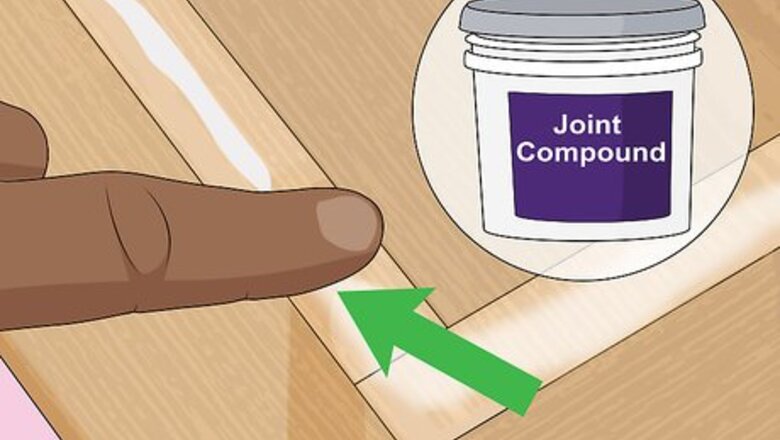
views
X
Research source
Because of this, MDF is strong and resilient, but it doesn’t absorb water well. This will negatively impact the finish of water based paints. Applying joint compound to the edges of your MDF and sanding its surface thoroughly will improve your finish. After that, all you need to do is prime and paint, and your MDF will have a brand new paint job.
Sanding the Surface
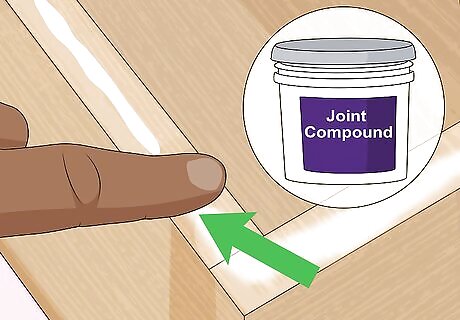
Apply joint compound to the edges of the MDF board. By coating the porous edges of the MDF with joint or drywall compound, you’ll create a smooth edge. With your clean finger or an applicator, like a putty knife, apply a thin, even layer of the compound to all edges on the MDF. Your compound application doesn’t have to be perfect. After the compound dries, you’ll sand it so the finish is smooth and even.
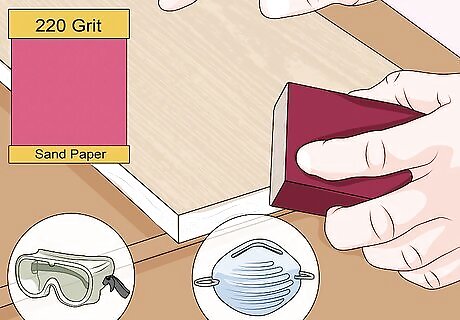
Sand the edges after the compound dries. Allow the compound to dry completely. The time this takes should be listed on the joint compound’s label instructions. When dry, put on a mask and googles. Use a medium grit silicon-carbide sandpaper, like 220-grit. Use light to moderate pressure to sand the areas with compound until it is smooth and even. Sanding the joint compound should create a fine dust. Use a clean rag to wipe all dust away. Do this carefully; any leftover dust will negatively impact the finish of your paint job.
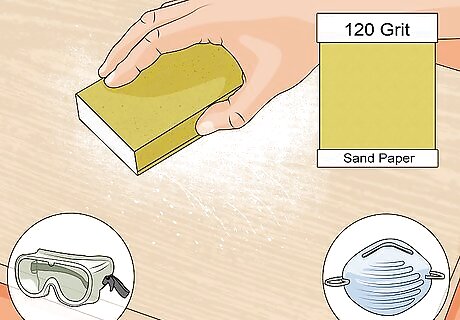
Sand the remainder of the MDF board. With your dust mask and protective goggles still on, use a fine grit sandpaper, like one rated 120-grit, to lightly sand all the surfaces you will paint on the MDF board. Sanding will produce fine wood dust.
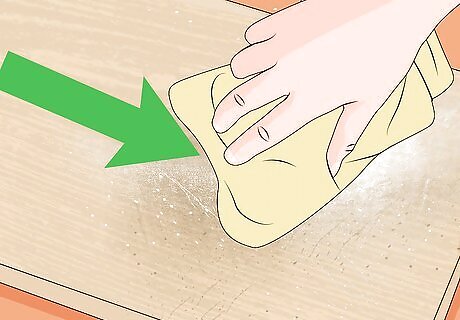
Clean the MDF. Use a clean rag to wipe away dust and any other dirtiness from the MDF. If your MDF is especially dirty, you may need to dampen your rag with water. However, if you do, you’ll need to allow your MDF to dry completely before moving on in the painting process. For MDF that is particularly dusty, use a vacuum to suck up any that remains following your rag wipe down.
Priming the Surface
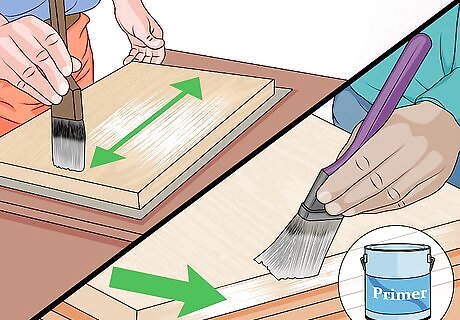
Apply primer to the MDF. Take your paintbrush and dip it into the primer. Wipe excess primer onto the inner lip of the paint can. Using long, overlapping strokes, cover the surfaces of your MDF that you will paint with primer. Apply the primer in a thin coat. The edges of MDF can be difficult to finish smoothly and professionally. Be sure you prime the edges completely. Corners of edges can be easily missed. After applying your first layer of primer, in many cases it may not even appear as though you’ve barely primed. The first layer of primer is often thin enough for you to clearly see the original finish through it. Note that most of the MDF already comes primed, in which case you won't need to prime it. However, pre-primed MDF becomes simple pressed wood when it gets wet, so you might want to use something else.
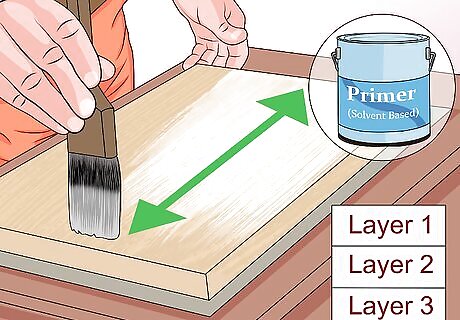
Coat the MDF in a solvent based primer, alternatively. A solvent based primer, like oil-, alcohol-, or lacquer-based ones, will not be as drastically affected by the MDF’s poor water absorption. Dip your brush into the primer and wipe excess off on the inner lip of its can. Apply a thin, even layer of primer with long, overlapping strokes. When you finish priming, the primer will likely look thin. You may be able to clearly see the original finish through the primer. This is completely natural. With a solvent based primer, one layer should be enough to improve the finish of your paint. However, for best results, use two or three thin layers of primer. Allow the primer to dry and lightly sand it between applications.
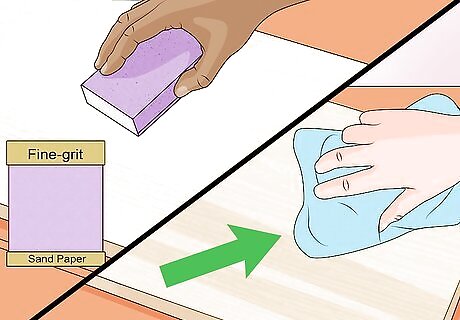
Sand the MDF after priming. Wait the time indicated on your primer usage instructions until the primer is dry. When sanding primer, use gentle pressure with your fine-grit sandpaper. When you are finished, the surface should be silky to the touch. Wipe dust from sanding away with a clean rag. The primer may lighten in color when sanding, but should still be visible. Using too much force with your sandpaper will strip the primer away. In this case, you’ll have to replace the stripped layer of primer. Sanding will smooth the outer layer of the primer. This will help subsequent layers that will be added later to adhere to the initial primer layer smoothly.
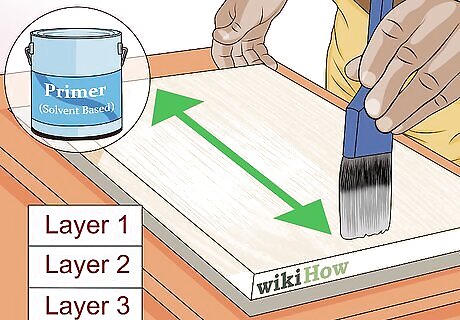
Add two more coats of primer. In the fashion previously described, continue to prime your MDF until it has three coats total. Alternate between priming and sanding. Remember to wipe down the MDF with a clean rag after sanding. Multiple thin layers of primer will form a stronger, more professional looking finish than one thick layer or several thick layers.
Applying the Paint
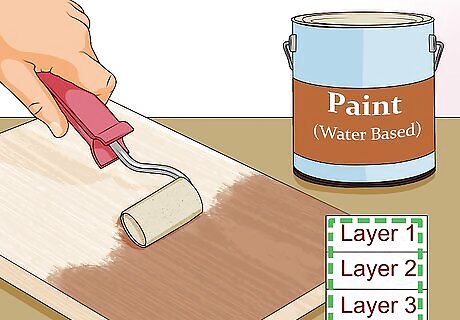
Paint the MDF with a water based paint. Open your paint and prepare it according to its instructions. In most cases, this will involve stirring the paint. Once open, dip your paintbrush into the can. Wipe excess paint on the inner lip of the can. Use long, overlapping strokes to apply the paint to the MDF. If using a roller to apply paint to your MDF, use one with low nap. “Nap” refers to the fuzziness of the roller. For the best looking and most resilient finish, use two to three thin layers of paint. In between applications, allow the paint to dry completely according to its usage directions.
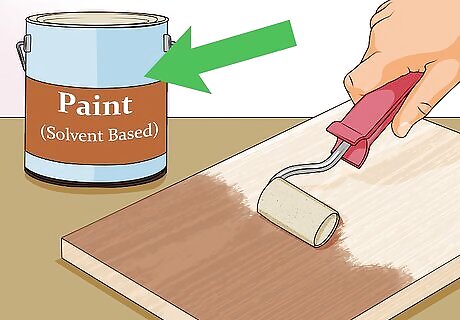
Use a solvent based paint, alternatively. A paint that is oil-, alcohol-, or lacquer based can be used in place of one that is water based. After primer has been suitably applied, both water and solvent bases should adhere to the surface. Apply the paint in the fashion previously described for water based paint.
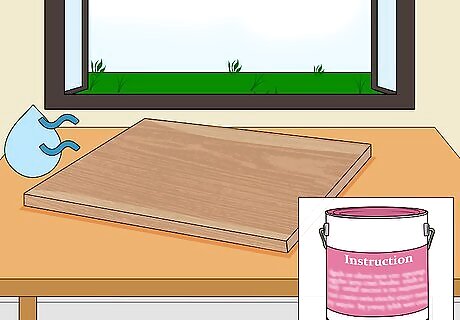
Allow the paint to dry and enjoy your finished MDF. Your paint should list a recommended drying time in its label instructions. A single layer of paint may be enough to satisfactorily coat your MDF. Although one coat may be sufficient, two to three thin coats will create a stronger, more polished finish. Allow the paint to dry completely between applications.














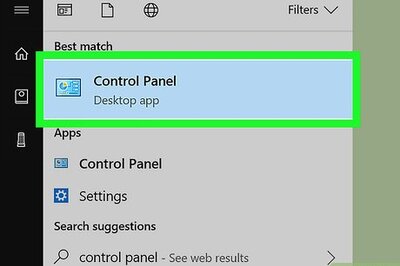





Comments
0 comment